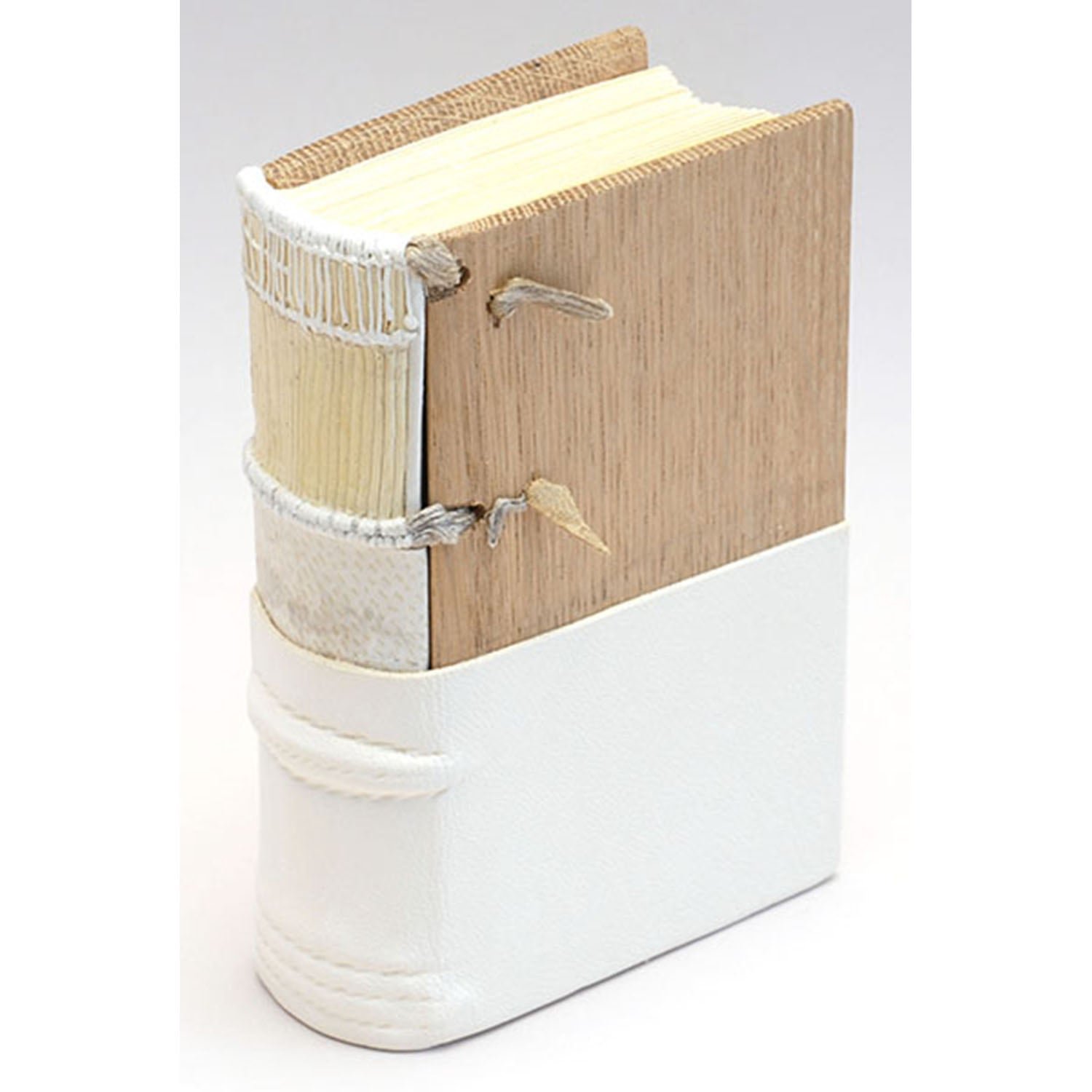 Image 1 of 1
Image 1 of 1


Medieval Binding: models
The Medieval binding may be the archetypal book: heavy wooden boards, partially or fully covered in leather, prominent bands on the spine, held shut by straps terminating in metal clasps. Though the materials differ, the construction of these bindings is surprisingly similar to how a fine leather binding is made today. Paper has replaced parchment for the text block; thick, dense paper has replaced wood for the boards; and the sewing is now often done on flat supports to present a smooth spine. The sewing supports are still laced into the boards, the boards still nest into the shoulder but with a different profile, spine linings still provide support though they now stop at the edges of the spine rather than extending onto the boards to function as levers to aid in opening. Carefully formed corners are now designed to be invisible rather than merely protect, endbands are now decorative only instead of structural elements that lace into the boards. Clasps are no longer necessary to hold the book closed.
In this course, students construct a small model highlighting aspects typical of a Medieval binding: text block sewn on double supports; wooden boards shaped all around, with special attention given to the inside spine edge to match the text block’s natural shoulder, then drawn on and pegged; sewn endbands; covered in full alum-tawed leather. The strap and clasp presented is harmonious with the binding but not strictly historical. It was designed for binders without metalworking experience and with a minimum of specialized tools.
These models were made as demos while teaching a bookbinding workshop. They may include marks or notes made to aid students. Colors and patterns will vary. Cutaway models revealing structural features are sometimes available.
Workshop handout not included with model but available separately here: Thirty-two-page detailed, illustrated workshop handout with bibliography plus tool and supply list. Please note this handout was written not to replace but to supplement an in-person workshop demo.
The Medieval binding may be the archetypal book: heavy wooden boards, partially or fully covered in leather, prominent bands on the spine, held shut by straps terminating in metal clasps. Though the materials differ, the construction of these bindings is surprisingly similar to how a fine leather binding is made today. Paper has replaced parchment for the text block; thick, dense paper has replaced wood for the boards; and the sewing is now often done on flat supports to present a smooth spine. The sewing supports are still laced into the boards, the boards still nest into the shoulder but with a different profile, spine linings still provide support though they now stop at the edges of the spine rather than extending onto the boards to function as levers to aid in opening. Carefully formed corners are now designed to be invisible rather than merely protect, endbands are now decorative only instead of structural elements that lace into the boards. Clasps are no longer necessary to hold the book closed.
In this course, students construct a small model highlighting aspects typical of a Medieval binding: text block sewn on double supports; wooden boards shaped all around, with special attention given to the inside spine edge to match the text block’s natural shoulder, then drawn on and pegged; sewn endbands; covered in full alum-tawed leather. The strap and clasp presented is harmonious with the binding but not strictly historical. It was designed for binders without metalworking experience and with a minimum of specialized tools.
These models were made as demos while teaching a bookbinding workshop. They may include marks or notes made to aid students. Colors and patterns will vary. Cutaway models revealing structural features are sometimes available.
Workshop handout not included with model but available separately here: Thirty-two-page detailed, illustrated workshop handout with bibliography plus tool and supply list. Please note this handout was written not to replace but to supplement an in-person workshop demo.
